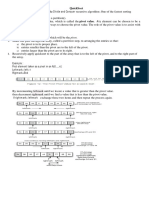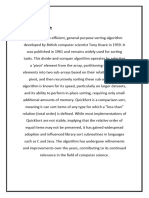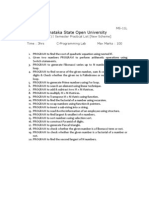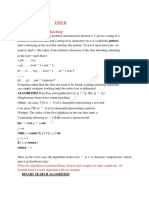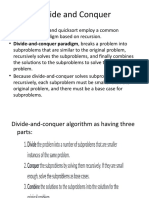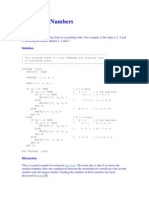0% found this document useful (0 votes)
53 views40 pagesCourse Name: CS302-Design An Analysis of Algorithm: Credit Hours: 3
The document provides information about the CS302 course on design and analysis of algorithms. Specifically, it discusses:
- The course is titled "CS302-Design an analysis of Algorithm" and is worth 3 credit hours.
- It then provides details on the quicksort sorting algorithm, including that it has average case performance of O(n log n) time, worst case of O(n^2) time, and works by recursively dividing the array into smaller sub-problems.
Uploaded by
f168002 Muhammad UmerCopyright
© © All Rights Reserved
We take content rights seriously. If you suspect this is your content, claim it here.
Available Formats
Download as PPTX, PDF, TXT or read online on Scribd
0% found this document useful (0 votes)
53 views40 pagesCourse Name: CS302-Design An Analysis of Algorithm: Credit Hours: 3
The document provides information about the CS302 course on design and analysis of algorithms. Specifically, it discusses:
- The course is titled "CS302-Design an analysis of Algorithm" and is worth 3 credit hours.
- It then provides details on the quicksort sorting algorithm, including that it has average case performance of O(n log n) time, worst case of O(n^2) time, and works by recursively dividing the array into smaller sub-problems.
Uploaded by
f168002 Muhammad UmerCopyright
© © All Rights Reserved
We take content rights seriously. If you suspect this is your content, claim it here.
Available Formats
Download as PPTX, PDF, TXT or read online on Scribd
/ 40
















